Recently, I began a role as a lead instructor at Brainstation Vancouver. The courses I teach relate to digital marketing and SEO.
So far, I’ve taught a 2-day course in Google Analytics and an intro class to Search Engine Marketing (SEM) Fundamentals.

Going through the SEM slides, I realized that SEM only usually considers two things: SEO & PPC. These are vital to any SEM strategy but I’d include other aspects of search as well.
Let me explain some more…
Here is the distinction I’d like to make right off the bat… and that is to advocate for a broader definition of what search engine marketing is.
So, let’s decide what to include in a broad definition of SEM…
Definition of Search Engine Marketing (SEM)
“Search Engine Marketing (SEM) is the use of search engines to increase visibility and clicks to your website and online marketing platforms. SEM strategy therefore has to consider all search engines that are used by your target audience, as well as all websites, platforms and advertising that rank high in search results for your target and industry keywords. SEM includes SEO, search advertising, as well as platforms like Wikipedia, Google My Business, review sites, and social media that appear in SERPs that affect your authority and reputation.”
A broader definition of Search Engine Marketing
Based on this definition, this is what will be included in this guide:
- SEM & Business Strategy
- SEM & Product Development
- The Importance of SEM
- Types of SEM
- SEO (Search Engine Optimization)
- Search Advertising (PPC & PPM)
- Owned Media Sites (e.g. Google My Business, social media)
- Reputation & Authority Sites (e.g. review sites, Wikipedia)
- SEM Fundamentals Conclusion
SEM & Business Strategy
Where does SEM fit into your overall business strategy and goals?
SEM on its own has little value; SEM is a promotional tool. First, you need to develop a product or service that is worth promoting. Then, when you promote a product or service, there is usually (but not always) a mix of online and offline marketing, the consideration of the two together is called integrated marketing.
SEM is a component of online marketing but it does naturally affect your overall marketing and business goals and strategy. You need to align business strategy with digital marketing and have the two in constant communication and feedback.
SEM & Product Development
Here are four general stages of product development:
- Market Need – what are consumers looking for and willing to pay for?
- Product Design & Development – can a product meet the needs of consumers while being viable in terms of profits and sustainability?
- Sales & Marketing – how is the product to be sold and promoted?
- Analytics & Customer Feedback – what data and feedback have we got to inform improvements to the product to better meet consumer needs?
In terms of these stages, SEM is obviously a huge part of sales and marketing. If customers can’t find your product, they can’t buy it. If they don’t know about it, or haven’t heard of it, they don’t even know they can buy it. This is why SEM is so important. You could have the best product in the world but if customers can’t find you, they can’t buy it. This is true for online and offline sales but so much of our research nowadays begins or ferments online.
Note: as well as being important in stage 3 above, SEM also plays a role in other stages, especially getting feedback from customers via online reviews. SEM and analytics go hand-in-hand, and what people are searching for, can help inform you about consumer intent and opinions. This should form the backbone of your keyword research, which is important to product development and refinement.
The Importance of SEM
“93% of all online experiences begin with a search engine and 91.5% of all clicks take place on the first page of Google.”
Sources: Propecta and Reputation 911
Think about that for a minute… what does it mean in terms of business strategy and the importance of SEM?
Well, if online marketing is important to your business, whether for sales or marketing and promoting your message, if you’re not present on page one of search engines for your target keywords, you’re essentially nowhere.
This isn’t to say that some businesses don’t make a ton of cash from doing well on specific social media platforms or maybe you invented the widget that goes inside a can of Guinness to create a nice pour, and you can ignore online marketing all together… But for most businesses, being found and heard online is fundamental to their bottom line. Nowadays, SEM and SEO are critical to your business.
Another point to make about SEM is intent. The user is signalling intent with what they are searching for. If you know what their intent is, especially regarding your business, you can serve them content and messaging to get them to your site.

Types of SEM
Most SEM guides only include SEO and PPC, which I find too narrow a definition. For me, there are four main types of SEM to consider in your SEM strategy:
- Search Engine Optimization (SEO)
- Search Ads (PPC / PPM)
- Owned Media Platforms (such as Google My Business and social media that ranks high in search results e.g. Twitter and Facebook).
- Third Party Reputation & Authority Sites (e.g. Wikipedia, online review sites e.g. Yelp, Yellow Pages, TripAdvisor for hotels)
If the overall goal is to increase the visibility of (and clicks to) your website or chosen platform, you have to consider how to maximize your reputation and authority in all four of the above.
Essentially, you have to not only rank high for your website but also convey authority and trust in the search rankings for keywords that people are using to search for you, and what you appear for.
This has implications for your business…
If you are serious about online marketing and SEM, you need to be tracking which keywords you are ranking for and how you are doing for your main target keywords.
Without this measuring framework, you are building a website in the dark. It’s similar to the way that brand monitoring and listening has become such a necessity in social media.
1. Search Engine Optimization (SEO)
If your goal is a healthy, engaged and sustainable website then SEO is the best way to go in order to build something long-term that doesn’t require a huge advertising budget to sustain.
SEO is fundamentally about getting specific content (e.g. your homepage or blog articles) to rank for specific keywords near the top of SERPs.
To do this, there’s a whole bunch of things you need to do.
Ultimately though, there is no magic fix to SEO or quick tricks to get you to rank high. Google is near perfect at serving users with what they are looking for!
SEO can be boiled down to 3 essential things:
- Great Content – that serves a specific audience with info they need.
- User Experience – that provides fast and secure webpages, especially on mobile.
- Backlinks – from relevant industry & authoritative sites.
If you get 1 and 2 right, 3 should eventually follow but if you add some SEO wizardry and promote your site well, you can get better results, faster.
What you do is decided by your goals and your resources. If you don’t have a ton of money or personnel then it will naturally take you longer to reach the top. SEO though is a marathon not a sprint and it will take time to build content that ranks well in search results. Even with sound strategy and an SEO expert, it would take a new site probably 6 months to rank for some target keywords, according to Alex Chris.
Check out the infographic below for the lowdown on what is good and bad for SEO:
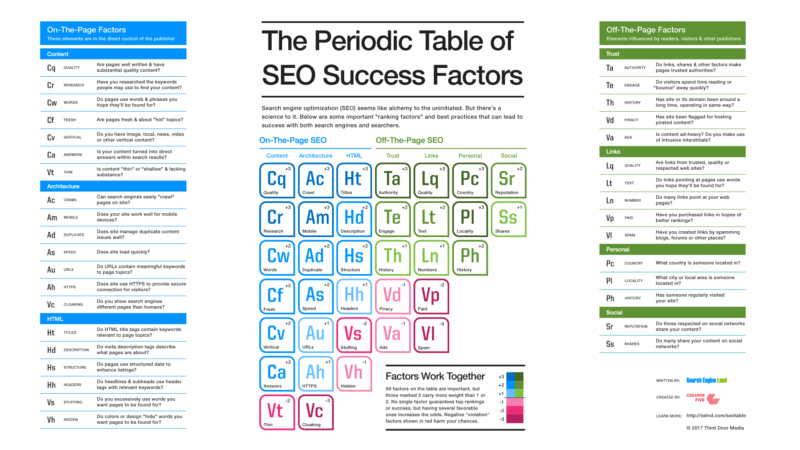
2. Search Ads (PPC & PPM)
Search ads are to be used with caution! They are typically a quick fix and a way to bridge the gap while you get your SEO working.
If SEO is your long-term healthy balanced diet to sustain and nourish your body, search ads are the chocolate bar you reach to when you’re in dire need of an energy boost.
Depending on your industry, target keywords, and the competition bidding on those keywords, you can spend an awful lot of money on clicks to your website. And that click is only as good as the content that it reaches and how you convert that click into something more meaningful e.g. a sale or a lead.
Before undergoing a search ad campaign, make sure to get your content on your landing page (the destination url for your ads) honed for the audience and message you are targeting with your ads.
Here’s another point about search ads:
You have to be very specific. Don’t just drive people to your homepage and expect them to wade through irrelevant information. You have to create campaigns that serve specific messages in ads to specific demographics that land on a specific page that serves specific content to that group. It’s all about getting that alignment down and installing a measurement or analytics system to judge the success of that traffic to the page. This means using analytics tools like Google Analytics and Google Tag Manager to set up goals and conversion tracking on your website. When you have all this in order, then press play on a search ad campaign and be in a better position to judge the ROI on your ad budget. This is the biggest mistake you can make with search ads: not setting up your landing page and ROI measurement from the start.
Typically, we think of search ads as being synonymous with Google Ads (recently rebranded from Google Adwords on July 24th, 2018). However, search ads also include other search engine advertising, such as Bing/Yahoo, Baidu, Yandex, Naver… It really depends on who you are trying to reach and where. In Japan, for instance, Yahoo is still a very popular search engine. In Korea, you have to be on Naver. In Russia, it’s Yandex.
Search ads are not always about PPC either, there’s also PPM. PPC stands for pay per click whereas PPM stands for pay per mille (or 1000 impressions). PPC is the typical way you would start with search ads since you only pay when someone clicks to your site. However, this means if you have a poor performing ad that doesn’t get many clicks, it will be rarely shown, which you could argue is what it deserves; Nonetheless, an ad is no use if it’s not being shown. This means that PPM is used, for instance, by big companies with big budgets for brand awareness campaigns and product launches. For SMEs and smaller budgets, we really only have to consider PPC.
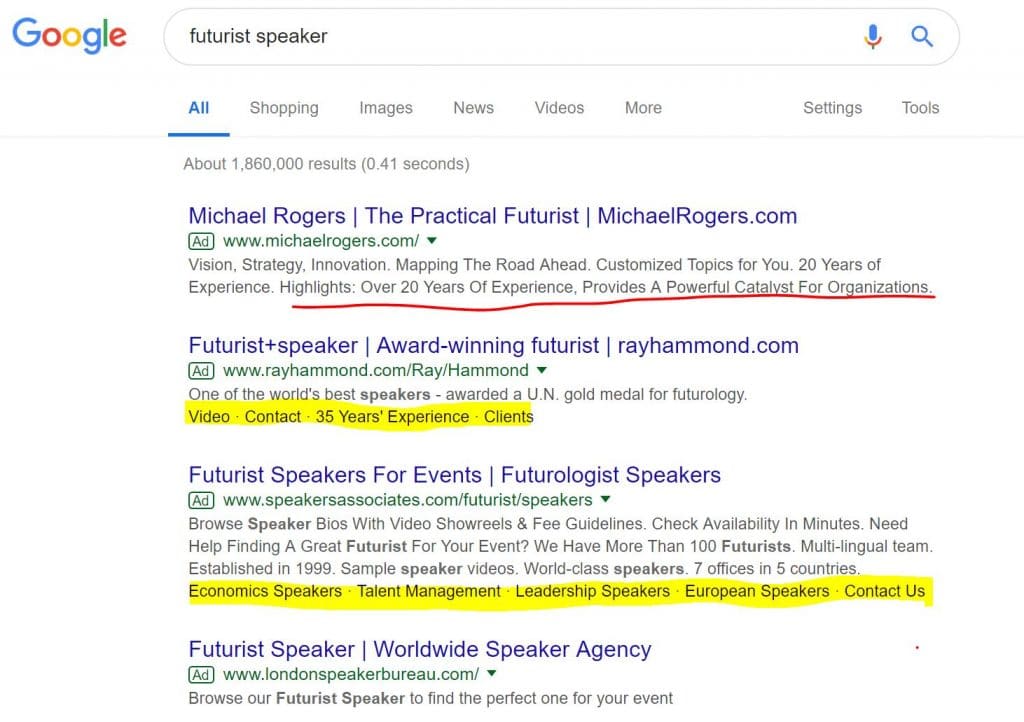
3. Owned Media Platforms
Owned media platform means that this is a site that is owned and controlled by you. You determine the messaging and content to show. However, you might not have total control over the medium and how the content or messaging is shared.
Examples of owned media platforms that are important to SEM include:
- Google My Business (GMB) – this is a platform that is very important for local SEO as it shows your business on Google map searches for your verified address. Google will show your business, if somebody searches for a product or service in your local geographic area, e.g. wine bars in West Vancouver or dentists in North Vancouver. GMB is especially important for desktop computers as it currently shows up on the right side of searches in the Google Knowledge Panel (GKP). You can add your business to GMB here.
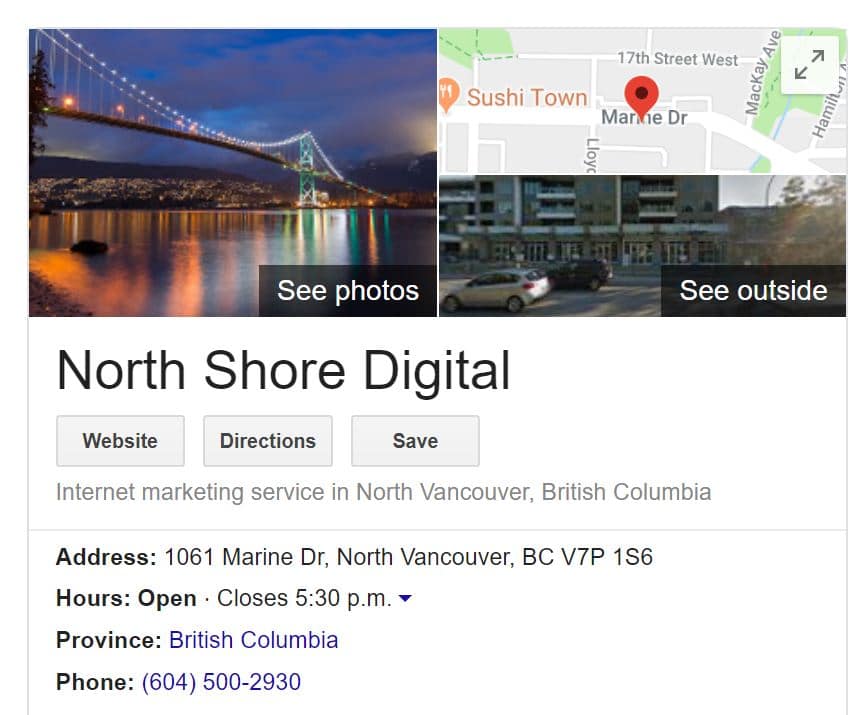
- Google Knowledge Panel (GKP) – although much of what is shown on GKP you can’t control. In fact, even though Google often shows things you don’t want to show here, you do have a degree of control here. For instance, you can claim a GKP for a specific business, brand, product, or person. Once verified, you can give Google feedback on what to show or to update info. We’ve done this, for example, for a client who is a high profile futurist speaker. We let Google know that they had his age wrong and to change the picture they had of him. Other things that show up in GKP include: your GMB profile, Wikipedia info, your online Google reviews, your social media profiles, your address etc. Keep reading below and you’ll even see an example of Facebook reviews appearing in the GKP.
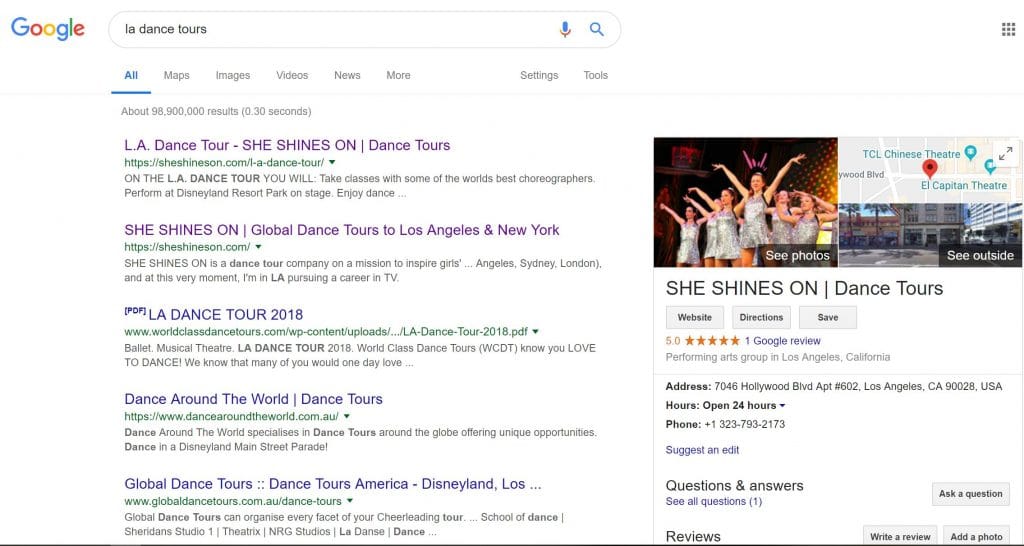
- Social Media – normally you wouldn’t consider social media as being part of SEM but recently I’ve seen a lot of social media ranking very high in SERPs. Not only do they rank high, they will show posts from your official accounts. This is the case if the keyword search matches a brand, product or person. Twitter does really well in search rankings and will show a selection of your latest tweets. Be careful what you post as this might be a user’s first online experience with your brand. An interesting thought is to consider whether social media ads form a part of SEM. Although the promotion and ads you pay for, takes place on that specific platform, a promoted tweet, for instance, could show up in SERPs.
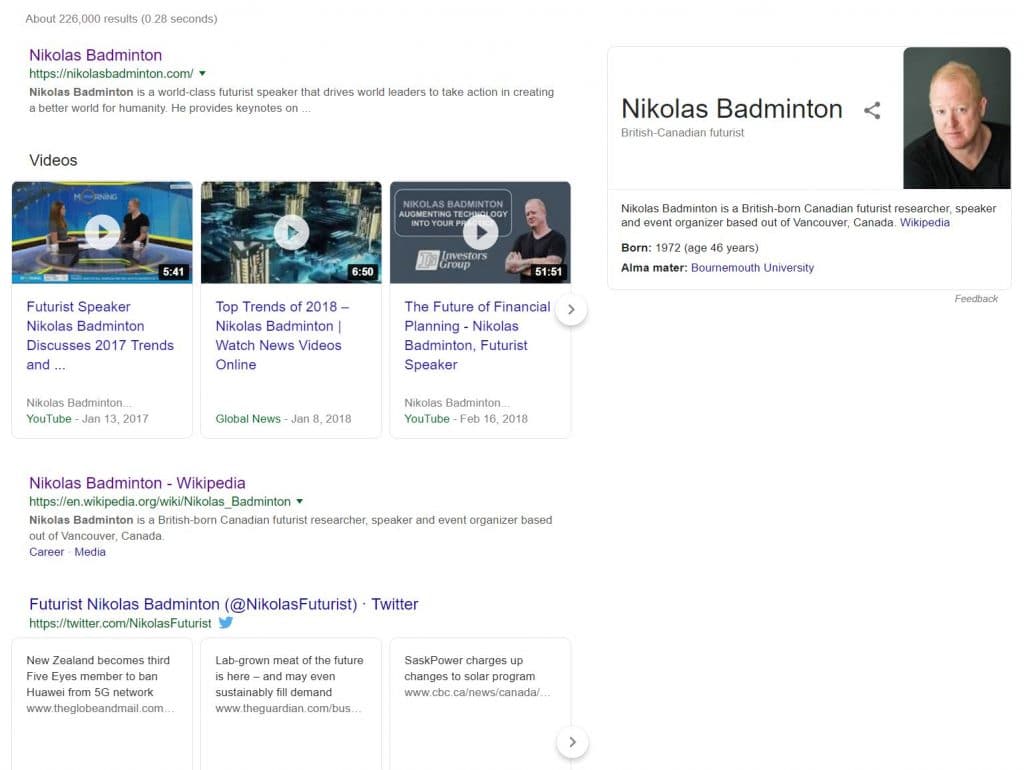
The key thing to consider with owned media sites and SEM is how to add more authority and trust around your brand. Potential or current customers are always looking for ways to interact or find out more about products and services, and so search rankings will guide them to platforms to engage with you. What appears near the top of rankings may well become their chosen communication medium with you so make sure to do frequent Google searches on your brand, company, products, services etc. You also need to check how platforms differ in rankings depending on where the search was performed from.
4. Reputation & Authority Sites
The main point to make about third party reputation and authority sites is that although you can’t control the message, you have to be aware of it, and can’t ignore it, especially if it’s appearing near the top of search rankings.
Best practices around brand management would also dictate that you should engage with what people say about your products or services.
You have to be available, honest, open, transparent, and positive about what your mission is.
Google reviews often appear at the top of rankings for your branded keywords, normally in the GKP. However, other review sites also do really well for rankings such as Yelp (add your business here) and Yellow Pages (add your business here) that are important for local businesses, Tripadvisor (for travel and hotels), or even sites like Boarding School Review for private boarding schools. It really depends on what industry you are in but these sites hold enormous power in terms of SEO and authority even if they could seem a bit hokey.
Another behemoth site that you have to consider for your SEM strategy is Wikipedia since it is an SEO monster, always appearing near the top of the rankings. If you represent a brand, company, product or professional, you might consider whether they are eligible for a page on the site as it will add to your authority and reputation.
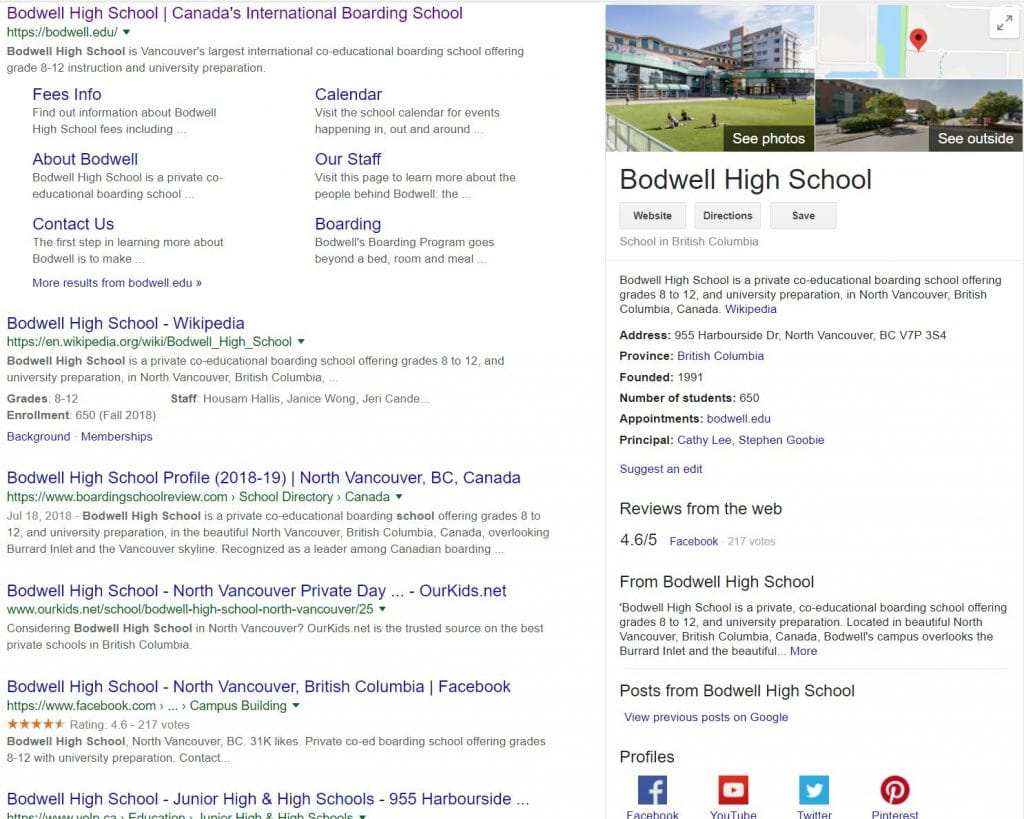
SEM Fundamentals Conclusion
Anything that can appear or affect what shows at the top of rankings for your target industry or branded keywords must be considered in your SEM strategy. This means SEO, search ads, owned media sites, and reputation and authority sites.
We’ve looked at what SEM is, why it is important to your business, as well as some considerations around the four areas of SEM.
Following on from this guide, the next areas to think about include:
- Keyword Research & Strategy – how to decide which keywords to focus on? What’s the difference between short and long tail keywords? How does voice search affect keyword strategy and how can I future-proof my business?
- Different Types of SEO – how are on-site, off-site, targeted, foundational, and local SEO different? Which is the right one to focus on for my business?
We will consider these in future guides.
If you like this guide or have found it useful, please consider sharing it or if you have any feedback or thought, please share in the comments below.

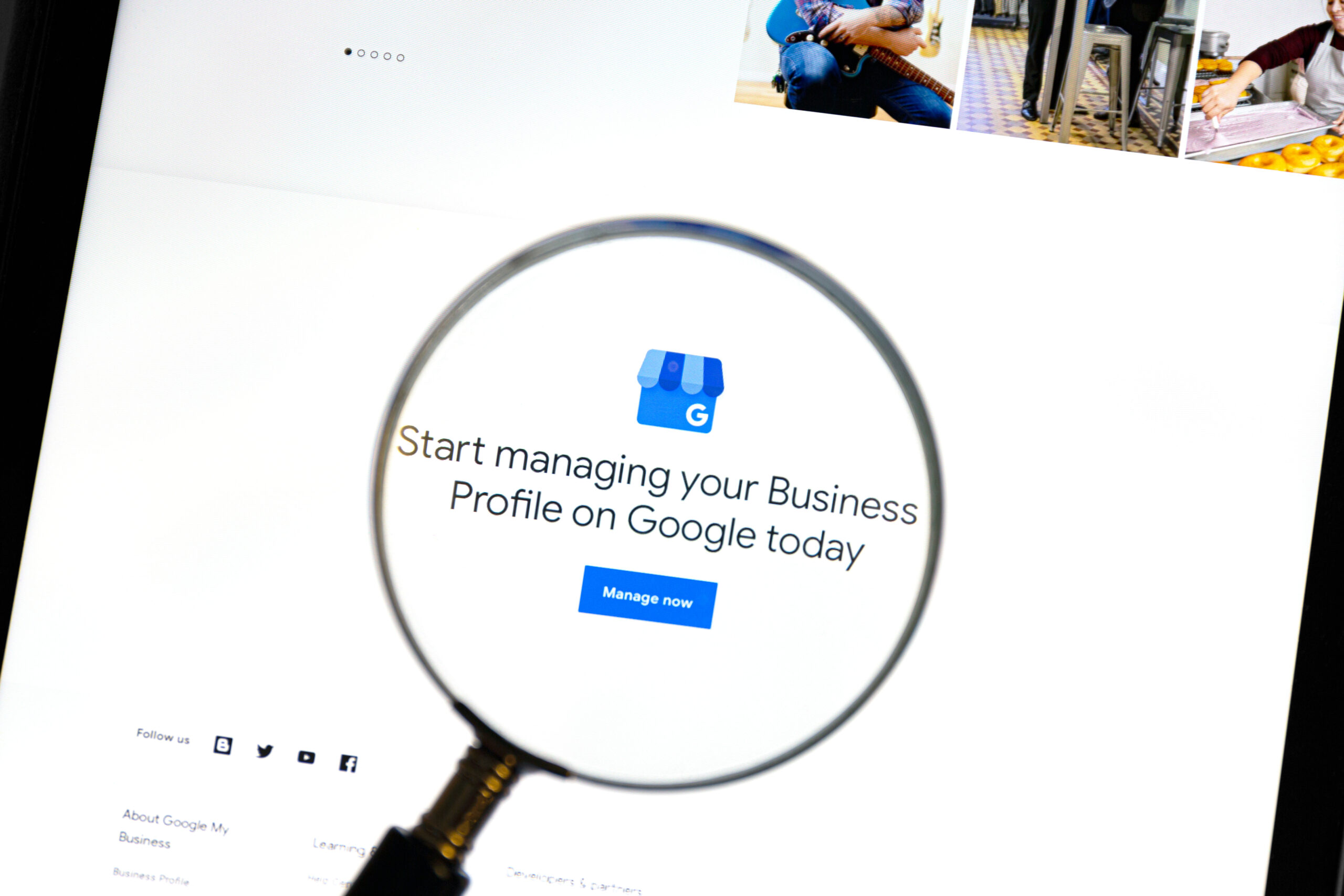

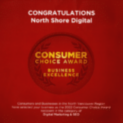

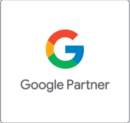



December 18, 2018 @ 10:03 pm
If you’re interested in taking the SEO fundamentals course at Brainstation, check it out here: https://brainstation.io/event/intro-to-seo-sem-analytics-2018119234727
June 27, 2019 @ 2:33 am
You have provided an nice article, Thank you very much for this one.